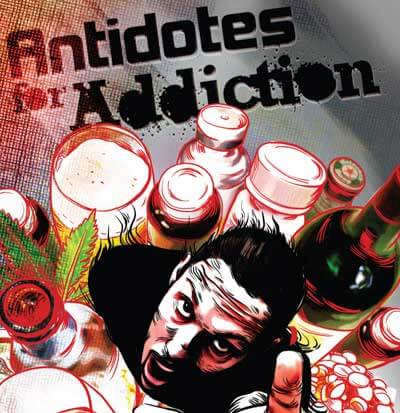Antidotes for Addiction
Drug addiction is a serious disease. In the U.S. alone, it affects millions of people and claims numerous lives. This staggering epidemic of substance abuse has led to an abundance of treatment options. Just what are they, and how do they help?
1 in 10
The estimated number of Americans (ages 12+) who use drugs or alcohol daily
23.2 million
Americans with clinical substance addiction
$600 billion
Annual medical and economic costs from substance abuse
Featured Programs
The Culprits
A basic understanding of popular drugs is important to understanding treatment, since treatment options can vary depending on the drug or drugs of choice.
Alcohol
Negative effects: Drowsiness, slurred speech, nausea, loss of coordination, impaired memory
Substance abusers/addicts: 18,658,000
Marijuana
Negative effects: Increased heart rate, slowed reaction time, increased appetite, panic attacks
Substance abusers/addicts: 4,090,000
Heroin
Negative effects: Dizziness, sedation, feeling of heaviness, slowed breathing and heart rate
Substance abusers/addicts: 227,000
Cocaine
Negative effects: Increased heart rate, increased blood pressure and body tremors, paranoia, anxiety, psychosis
Substance abusers/addicts: 1,549,000
Methamphetamine
Negative effects: Tremors, increased energy, irritability, anxiety, psychosis, reduced appetite
Substance abusers/addicts: 626,000
Prescription painkillers
Negative effects: Depression, anxiety, impaired memory, muscle aches, disorientation, nausea, dissociation
Substance abusers/addicts: 1,546,000
Treatment Options: Traditional or Modern?
Just like any medical practice, there are tried and true versions of therapy and newer, lesser known methods. Let’s take a look at the treatment methods for addicts.
10%
Addicts currently receiving treatment
$25,166
Average cost of 28-day inpatient treatment program
Types of Treatment
Inpatient rehab with detox
Best for: Users with daily, life-threatening addictions who do not live in conditions conducive to treatment.
How it works: A typical stay is 28 or 30 days. Patients go through clinical detox, attend mandatory therapy sessions and stay in a sober living space.
Outpatient rehab
Best for: Users who have family or loved ones who can encourage and help maintain sobriety.
How it works: A patient must report to meetings and therapy sessions conducted outside a hospital setting. Programs often are as long as inpatient treatments, 28-30 days.
Cognitive behavioral therapy
Best for: Users who have previously or continuously relapsed.
How it works: Through therapy, users are exposed to their abused substance in order to build their confidence in refusing to indulge. This is purely a reactionary, physical therapy that does not include psychotherapy.
Psychotherapy
Best for: Users who have experienced past traumas that have contributed to their addiction.
How it works: Talk therapy is utilized to uncover traumatic memories and/or experiences at the root of an individual’s addiction.
Drug-replacement treatment (methadone therapy)
Best for: Users of severely addictive, intravenous drugs; typically heroin and methamphetamine.
How it works: Though only considered a temporary fix, the substance being abused is replaced with methadone or an equally sedating drug to offset the symptoms of withdrawal.
Hypnosis
Best for: Users who believe their addiction is purely psychological and can be overcome with willpower and not medicine.
How it works: Patients are hypnotized and convinced that they do not need or desire the substance they abuse. For narcotic users, hypnosis is often paired with methadone therapy.
12-step programs
Best for: Users who need ongoing treatment and outpatient rehabilitation.
How it works: Users attend regular meetings, sometimes for years, and go through the process of changing their entire lifestyles along with their drug abuse.
Nutrition therapy
Best for: Users who are interested in health and maintaining a healthy lifestyle to replace their consistent drug abuse.
How it works: This therapy utilizes the view that drug addiction is due to an imbalance of chemicals in the body. By focusing on nutrition and balance, users attempt to battle their biochemistry to maintain healthy lifestyles and overcome addiction.
Holistic therapy
Best for: Users who believe in new-age remedies.
How it works: Holistic doctors often use a mix of complementary medicines, equine therapy, acupuncture, neurofeedback, massage and more to treat addiction and its psychological effects.
SOURCES
http://www.narconon.org/
http://www.drugabuse.gov/
http://www.nih.gov/
http://www.cdc.gov/

